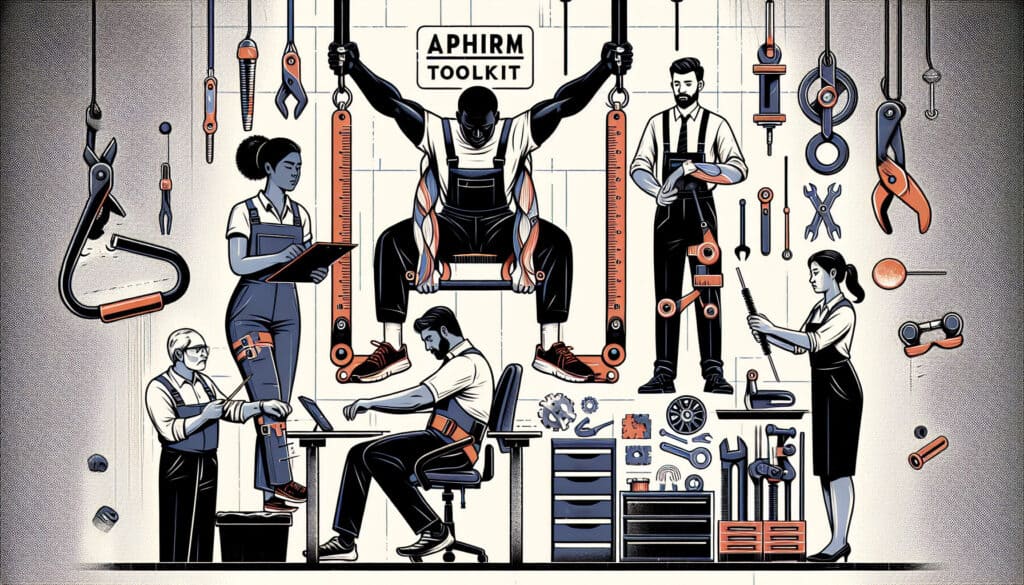澳大利亚开发的资源工具包,帮助各组织管理肌肉骨骼疾病的风险。
- 方法: 客户与营销, 经济学, 产品设计
APHIRM 工具包

APHIRM 工具包
- 持续改进, 人体工程学, 健康科学, 人为因素, 流程改进, 质量管理, 风险管理, 安全, 可持续发展实践
目标
如何使用
- APHIRM(参与式危害识别与风险管理)工具包为识别、评估和控制工作场所的肌肉骨骼危害提供了逐步指导。它包括一系列实用工具,如核对表和工作表。
优点
- 为管理肌肉骨骼风险提供了一个实用易用的框架,该框架以参与式方法为基础,专为澳大利亚工作场所开发。
缺点
- 可能不适用于所有国家或行业,需要管理层和工人的承诺才能有效,也可能不适合所有类型的肌肉骨骼危害。
类别
- 人体工程学, 人力资源, 风险管理
最适合:
- 管理澳大利亚工作场所的肌肉骨骼疾病风险。
APHIRM 工具包对于医疗保健、制造和物流等人工操作和重复性工作较多的行业尤为重要。它适用于项目的各个阶段,包括初始设计、实施和持续维护。包括健康与安全官员、人体工程学专家和一线工人在内的多学科团队通常会启动风险评估流程,确保直接受影响者的见解和经验能为危险评估提供参考。该工具包的参与性质允许不同的利益相关者提供意见,使其能够适应不同的工作环境和实践。核对表和工作表等实用工具促进了参与,并便于直接应用,无论现有的风险管理专业知识水平如何。定期将 APHIRM 方法纳入工作场所安全计划,不仅能促进遵守澳大利亚安全工作法规,还能鼓励安全文化,从而降低肌肉骨骼疾病的发病率。通过确保风险管理是一项共同责任,工作场所可以促进有关安全措施的持续对话,从而不断改进人体工程学实践,改善员工的健康状况。通过综合方法,该工具包还可作为开展以风险识别和缓解策略为重点的培训课程和研讨会的蓝图,使团队有能力积极主动地解决与肌肉骨骼健康有关的问题。
该方法的关键步骤
- 通过工作场所评估和观察,识别肌肉骨骼危害。
- 使用定性或定量措施评估与已识别危害相关的风险程度。
- 让利益相关方参与制定控制策略,以降低已识别的风险。
- 实施选定的控制措施,并确保通知所有员工。
- 监控已实施监控措施的有效性,并收集员工的反馈意见。
- 定期审查和更新风险管理流程,以反映工作场所的变化或新出现的风险。
专业提示
- 将人体工程学评估纳入定期工作流程评估,以识别可能无法立即察觉的细微危害。
- 利用参与员工的反馈回路,根据实际经验不断完善和改进风险管理策略。
- 利用数据分析工具监测肌肉骨骼疾病的趋势,并根据确定的模式主动调整干预措施。
历史背景
1986
(如果日期不详或不相关,例如 "流体力学",则对其显著出现的时间作了四舍五入的估计)。

相关文章
肌肉骨骼不适调查表
多变量测试(MVT)
多元回归分析
动作捕捉系统
MoSCoW 方法
情绪中值测试